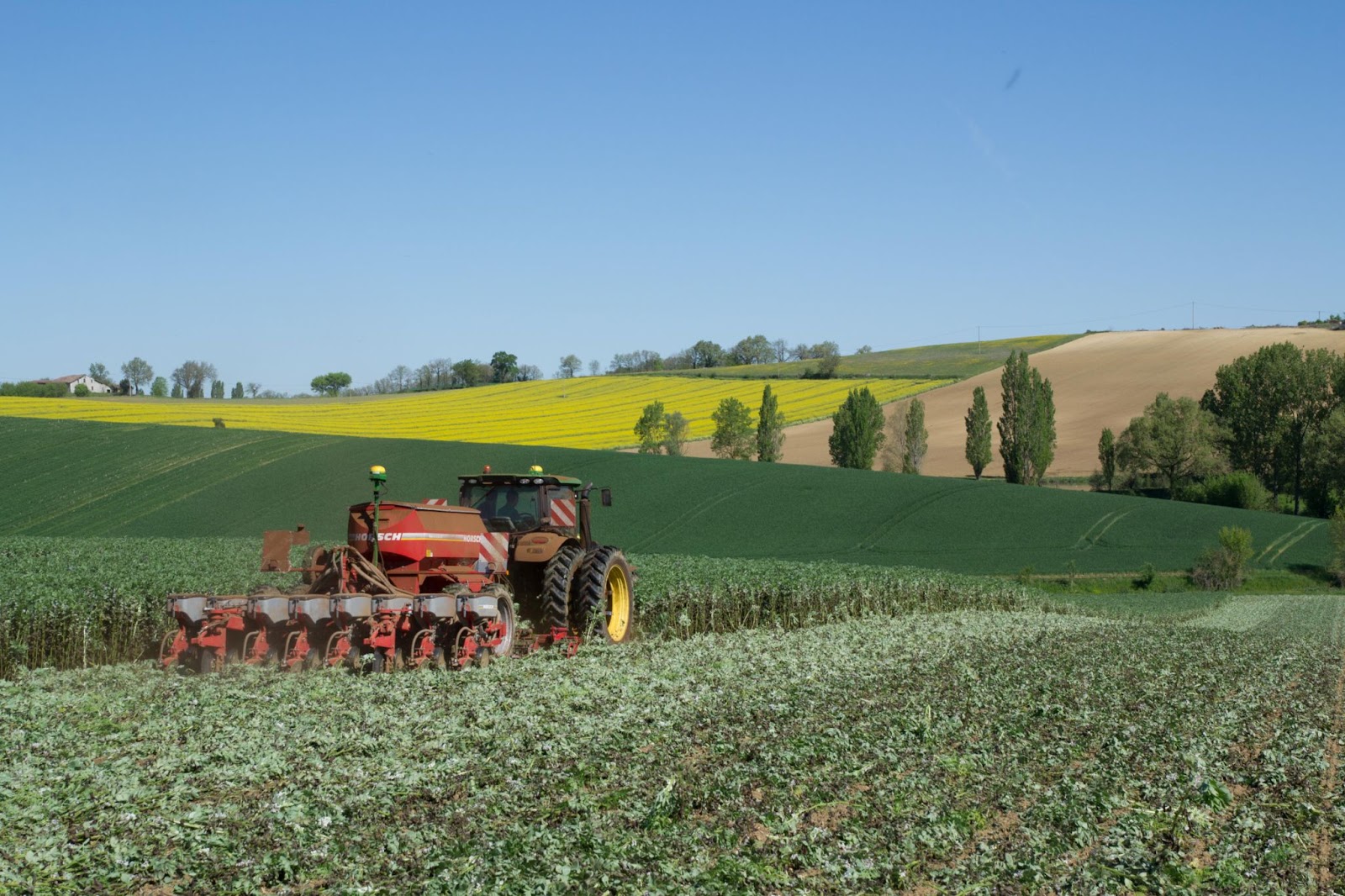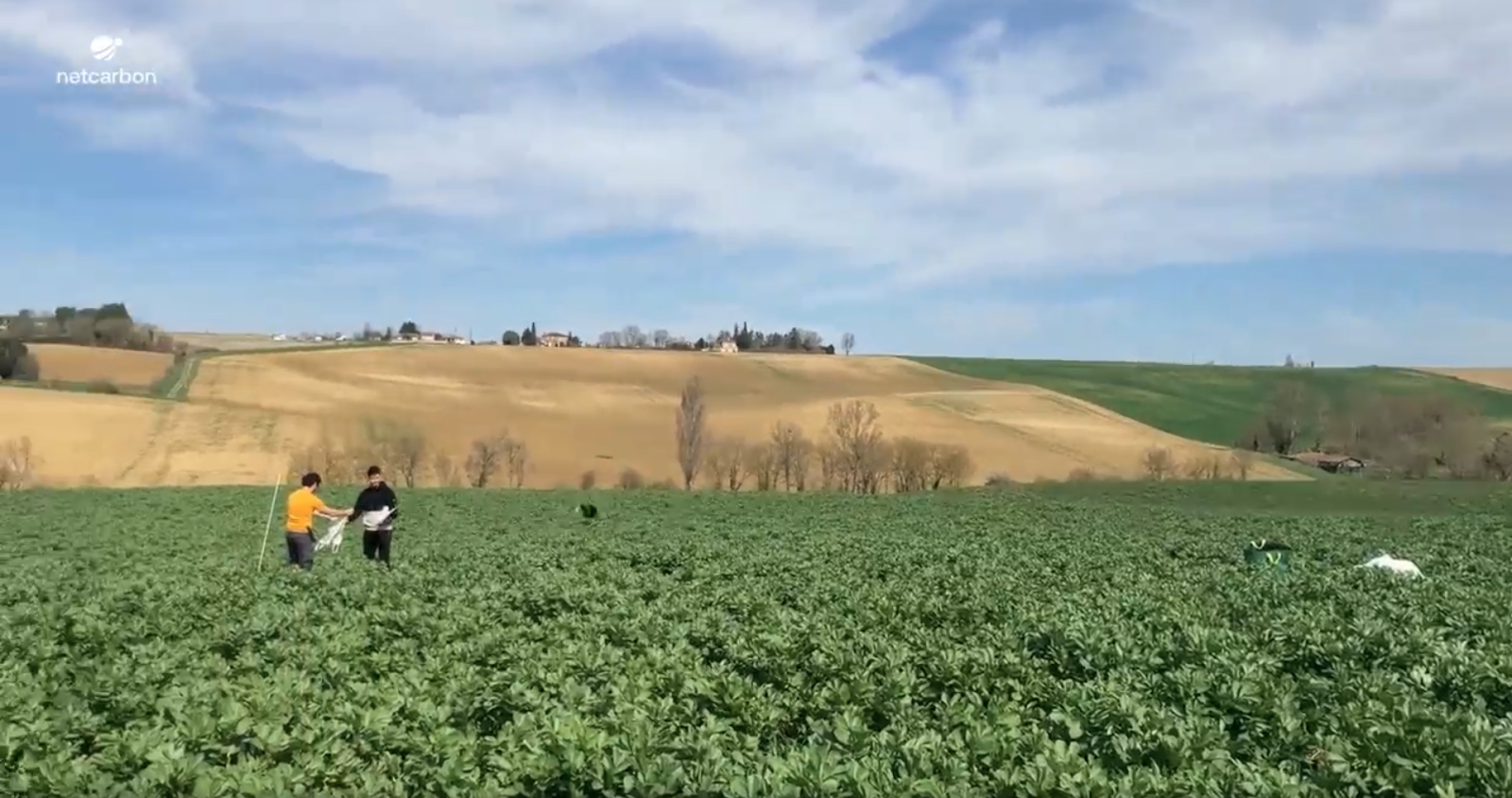How the popcorn industry pays its farmers based on the carbon sequestered in the soil
Comfortably ensconced in his armchair, the consumer has no idea that the popcorn he eats while watching his movie can help reduce the effects of climate change by storing carbon in the soil.
Today, agriculture is responsible for around 20% of our CO2 emissions in France. One of the greatest potentials for carbon sequestration is to be found in our soils. Currently, the carbon stock contained in soils is around 1,700 GtC, i.e. twice as much carbon as in our atmosphere, and this storage could be considerably increased through the implementation of agro-ecological practices. With this in mind, Netcarbon has developed a solution for tracking the deployment of agricultural carbon sequestration initiatives across the globe. One such initiative is the use of intermediate cover crops.
An intermediate cover crop is a crop planted between two harvested crops. Its purpose is to remain on the plot and be buried in the soil to nourish and protect it before the next crop is sown. Intermediate cover crops represent a huge opportunity for agriculture and for our planet. Not only do they improve soil structure, limit erosion and increase organic matter, while helping to optimize the PEA (Plan Épargne Azote 😄), but they also act as natural carbon sinks. Until recently, quantifying the amount of carbon captured by this practice required field measurements, a time-consuming, expensive process that did not always provide an objective measure of the average condition of the plot.
Today, it is possible to quantify canopy biomass using satellite data. The partnership between Nataïs, the European leader in popcorn, CESBIO, a reference laboratory for the study of biosphere functioning and remote sensing, and Netcarbon, an expert in the measurement of carbon capture, marks the start of a new era. This partnership makes it possible to precisely measure the biomass of intermediate cover crops throughout their cycle, as well as the carbon they store in our soils, thus offering an effective solution for monitoring and amplifying the deployment of this practice throughout the country.
A silent revolution driven by Nataïs
In the heart of the Gers, Nataïs is not only the European leader in popcorn. It's a company deeply committed to the agro-ecological transition. For years, Nataïs has been working hand in hand with over 200 farmers to build a more environmentally-friendly agriculture.
Nataïs' great strength lies in its visionary approach: integrating and financing intermediate cover crops into farmers' crop rotations to improve soil health while capturing atmospheric carbon. These cover crops play an essential role, but to go even further, we needed a precise and reliable way of measuring their impact.

The challenge: Quantifying biomass and stored carbon
How can we effectively monitor the impact of these intermediate cover crops? How can farmers be fairly remunerated for the carbon they store in the soil? How can we promote these practices to the companies that buy popcorn? The answer came in the wake of the Naturellement Popcorn project. Building an industrial approach, supported by satellite data and modeling, to quantify the biomass of intermediate cover crops and the evolution of soil carbon stocks.
What used to be available only on a very small number of plots can now be quantified on a large scale and at a resolution of 10 meters, paving the way for the deployment of an objective and fairer carbon premium for farmers.
The technology: CESBIO & Netcarbon collaboration
In collaboration with the Centre d'Études Spatiales de la Biosphère (CESBIO), Netcarbon has industrialized the AgriCarbon-EO modeling tool, integrating it into its carbon analysis solution. The fruit of over 10 years' research, AgriCarbon-EO is a hybrid method based on three technologies:

Satellite observation of vegetation
Satellite observation offers us an unprecedented view of our planet, capturing images every 5 days at a resolution of almost 10 meters. Thanks to their precision and revisit frequency, the European Space Agency's Sentinel-2 and NASA's Landsat satellites enable us to keep a close eye on vegetation. By measuring the light reflected by vegetation via the satellites, the PROSAIL model calculates LAI. But what exactly is LAI? LAI (Leaf Area Index) represents the surface area of leaves per unit area of ground, expressed in m² of leaves per m² of ground. This index provides a precise quantification of the density of plant cover on a plot of land.
The
AgriCarbon-EO vegetation cycle modelincludes the SAFYE-CO2 agronomic model developed at CESBIO, which uses agrometeorological information and crop parameters to simulate agricultural production (biomass, yield) andCO2 flows between plots and the atmosphere. SAFYE-CO2 also models the LAI that the satellite is capable of observing, which brings us to the third technology.
Integrating satellite data into the agronomic model
The final component is the integration of satellite LAI into the agronomic model. In fact, LAI is both measured by the satellite and simulated by the model! This is where the magic happens: based on Bayesian statistical methods, which take into account the uncertainties of satellite observation and model predictions, optimal vegetation cycle trajectories are identified. This enables us to calibrate the model on the basis of all this data, which is now accessible from anywhere on earth, via our application and our APIs. Our APIs (Application Programming Interfaces) make it easy to integrate our data into our customers' tools with just a few lines of code, further simplifying access to this information.

Netcarbon is improving its approach every day. The team visited Nataïs network plots in the Gers region in March 2024. This meeting with farmers enabled us to gain a better understanding of their practices, and also to take over a hundred samples of biomass from intermediate cover. We compared our satellite monitoring with the reality on the ground. The result? An error of less than 1 tonne of dry matter per hectare!

Concrete benefits for farmers
The impact of biomass measurement goes far beyond data. For farmers, it's an opportunity to transform their practices while benefiting from a financial return.
- A carbon premium: By quantifying the carbon stored, Nataïs values the sequestered tonne of CO₂ at €45. In 2024, the average carbon premium amounts to €78 per hectare, offsetting the majority of the costs associated with planting cover crops. In addition, a floor premium of €45 per hectare has been introduced to secure and encourage farmers' commitment to this approach.
- Improved soil health: Intermediate cover crops improve soil structure, making it more fertile and more resistant to erosion. By trapping nitrogen and enriching the soil with organic matter, these practices boost long-term agricultural productivity.
- More resilient agriculture: With healthier soils, farmers are better prepared to face tomorrow's climatic challenges.
+ 8,000 tonnes of CO₂ absorbed
This year, over 8,000 tonnes of carbon were stored in the soil thanks to the intermediate cover planted by Nataïs partner farmers. This figure illustrates the impact of this practice in the fight against climate change.
To better grasp the scale of this figure, 8,000 tonnes of CO₂ represents the amount of CO₂ absorbed by nearly 320,000 mature trees in a single year, or the equivalent emissions of 4,000 return flights between Paris and New York. These examples show that the combined efforts of Nataïs and its farmers are already having a significant impact - and this is just the beginning!
The potential is even much greater: by generalizing intermediate cover on all farmland in France, we could absorb up to 12 million tonnes of CO₂ per year. This would be equivalent to offsetting the emissions of 1.4 million people every year, or absorbing 14% of the French agricultural sector's total emissions. These figures highlight the immense power of this practice for the climate, while also helping to strengthen the resilience of our agriculture.





.png)
.webp)